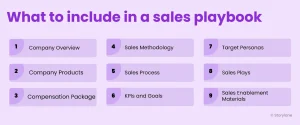
Company representatives form relationships with prospects by holding scheduled meetings, product/service demonstrations and price quotes – either to complete a deal, put it on hold or lose them altogether.
Calculating how many opportunities you need at each stage to meet your quarterly or annual sales goals will enable you to determine how many leads need to be generated by your team and managed.
Stages of the Sales Pipeline
Establishing a sales pipeline that guides prospective buyers from lead to customer will greatly increase your company’s efficiency. The specific steps will depend on your product, customer base and sales team – but typically include prospecting, qualification, nurturing leads, proposal development and negotiation.
Prospecting is the process by which salespeople identify potential customers based on information contained within your CRM system or marketing campaign. After qualifying leads, your team nurtures them further by sending content or meeting with them directly in order to understand more about their needs and pain points.
Your sales reps then create a proposal outlining how your product or service will solve customer needs, then negotiate pricing and terms to close a sale. After closing, communication continues between customer and team to ensure satisfaction as well as identify opportunities for upselling or cross-selling opportunities.
Identifying the Right Leads
Sales are the lifeblood of any business, and attracting enough qualified prospects into your pipeline on an ongoing basis is vital for long-term success. But it is also essential to remember that not all leads are created equal – it may be tempting to cast the prospecting net as wide as possible but overdoing it could actually diminish conversion rates and compromise success rates.
Focusing on quality over quantity should always be your goal. Spending too much time chasing mismatched prospects can clog your pipeline and drain resources; worse yet, they might never become customers at all – costing both time and money in wasted efforts.
Potential consumers can be divided into warm or cold leads, and there are various strategies for cultivating them. Cold leads refer to individuals who have yet to express any interest in your products or services while warm leads have advanced beyond awareness and are considering purchasing. Once customers reach decision stage they are considered Marketing Qualified Leads (MQLs). Once an MQL has reached decision phase they are passed onto sales team for further evaluation.
Identifying the Right Stages of the Pipeline
A typical sales pipeline typically comprises seven stages, such as prospecting, lead qualification, initial contact, scheduling a meeting, needs analysis, closing and follow-up. Each business may use their own sales process with custom stages such as in-person meetings or product trials being added as needed.
An effective pipeline can be an invaluable way to enhance individual and team performance, as it identifies issues like an ineffective sales process or long sales cycles that impede overall sales goals.
As an example, if you find that most of your customers prefer emails instead of phone calls when checking in with them, making changes accordingly could improve customer satisfaction and drive revenue growth. By regularly reviewing pipeline metrics you can ensure a healthy flow of qualified leads as well as ensure each representative works on opportunities that match his/her strengths and experience – thus leading to higher sales velocity and shorter sales cycles that meet organizational objectives.
Managing the Pipeline
Your pipeline’s structure and stages will depend on your sales process, but you should ensure it contains an ideal combination of opportunities at each stage. Too much emphasis placed on one stage could mean neglecting others while too much emphasis placed on closing may mean missing out on opportunities altogether.
Maintaining accurate prospecting data is also key for effective sales processes and can make identifying bottlenecks in your pipeline and weaknesses in sales processes easier.
Establishing an efficient process will allow your team to close more deals quickly. By knowing exactly which steps need to be taken and when, meeting sales goals becomes much simpler. Furthermore, tracking conversion rates and cycle length is easier.








